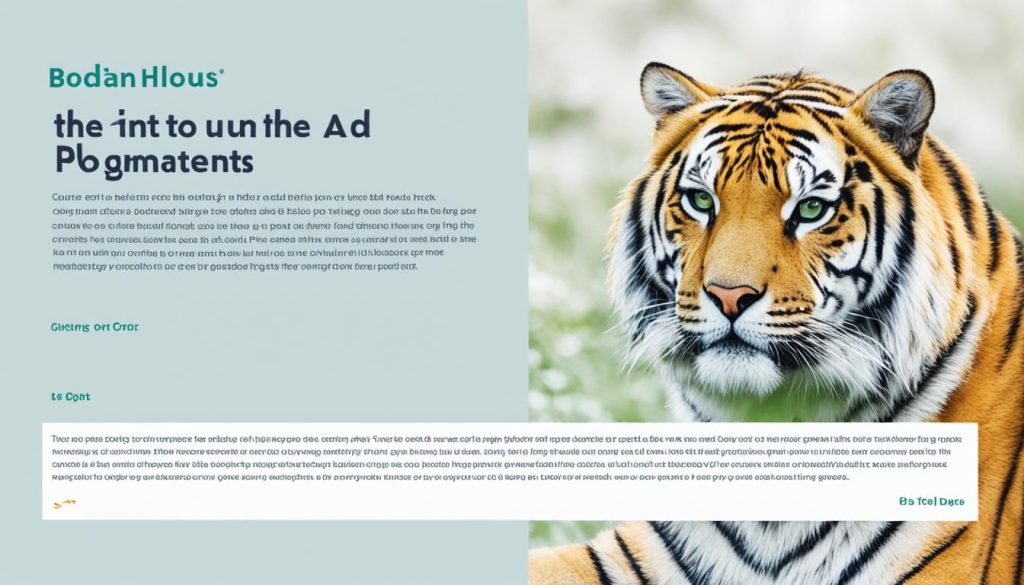Are you having trouble making money from your blog? Facing issues that stop your blog from making as much cash as you’d like? It’s a common struggle. Many bloggers hit roadblocks that slow down the money-making process.
Simply writing good posts isn’t enough to make a living from blogging. To really make money, you have to tackle specific problems and use smart strategies that match your aims.
This article will dive into the key issues bloggers face when trying to make money. It will share tips to deal with these problems. Topics will include picking the best niche, creating different revenue streams, the importance of user experience, and how to use analytics for growth. We aim to help you know how to profit from your blog effectively.
Are you ready to boost your blog’s earnings? Let’s get started!
Click here to learn more about making money through blogging.
Choosing the Wrong Niche
One of the toughest parts of creating a blog is picking the right niche. If chosen incorrectly, it can be hard to draw in the right readers and make money from your blog. To find success, choose a niche you love and know a lot about. At the same time, this niche should be popular and potentially profitable. Doing your homework by looking at the market and your competition can point you in the best direction.
When choosing your blog niche, think about what you really care about and what you’re good at. Also, look at which topics can bring in some cash. It’s great to pick something you’re excited about. This keeps you going when things get tough. While picking, do some serious niche selection research. This shows you if people want to read about your topic and how many others are writing about it.
First, come up with ideas for blogging niche that match your skills and interests. Next, look into each one to see if they have a big audience and if you can make money from them. Choose topics with a lot of readers. But, make sure there’s room for you. You want a profitable blogging niche where you can do well and stand out.
Looking at what others have done in your area is very helpful. Check out the best blogs in your niche. Learn from their good points and their mistakes. Pay attention to what they write, who they write for, and how they make money. This lets you see where you can be different and what readers might need that’s not out there yet.
If you’re not sure how to pick the best niche, this guide on niche selection can point you in the right direction. It offers tips and tricks to help you avoid common mistakes.
Factors to Consider When Choosing a Blog Niche
| Factor | Description |
|---|---|
| Passion | Choose a niche that aligns with your interests and expertise to maintain long-term motivation. |
| Demand | Conduct market research to ensure there is enough audience interest and demand for your chosen niche. |
| Profitability | Consider the potential income generation opportunities within your niche, such as affiliate marketing and sponsored content. |
| Competition | Analyze the competitive landscape to identify gaps in the market and differentiate yourself from others in your niche. |
| Longevity | Choose a niche that has the potential for long-term growth and relevance. |
Relying on a Single Income Stream
Being a blogger makes it easy to just rely on one way to make money from your blog. But, sticking to just one way can be risky. It could limit how much you make. It’s smart to get money from different places to keep your income steady.
To bring in money in many ways, try different ways to make your blog a source of income. This means not just one method, but many. By doing this, you open the door to more money-making opportunities.
Ads are one great way to make more money with your blog. Try using different kinds like display ads, native ads, or video ads. Working with ad companies or using programs that place ads can help you earn more from clicks.
Affiliate marketing is also a great choice for making money with your blog. You promote products or services. When someone buys something or signs up through your special link, you earn money.
Working with brands on sponsored posts can be another way to make your blog more profitable. When you write about their products or services, you get paid. It keeps money coming in regularly.
Selling digital products is yet another path to a more profitable blog. You could sell e-books, courses, or special content. It’s a way to share your knowledge with your readers and make money too.
In short, it’s not wise to depend on only one way to make money from your blog. Mix up your earning methods with ads, affiliate marketing, sponsored posts, and digital goods. This way, you can build a stronger and more profitable business.

Neglecting Your Email List
Your email list is key for making money from your blog. It offers a direct way to talk to your fans. By using it well, you can showcase your deals effectively. If you ignore your list, or if you don’t even have one, making money will be harder. So, start focusing on your email list early on.
Start by giving your visitors a good reason to sign up. You can offer a free ebook, a peek at top-notch content, or a special discount code. This makes people want to be on your list. And it shows you care about giving something back.
Once people are on your list, keep them engaged with relevant, regular emails. Your emails should always bring value. You can share useful tips, secrets, or a preview of what’s coming on your blog. The aim is to keep them interested in what you share.
Monetizing your email list gives you a bunch of possibilities. You could sell your own stuff, suggest useful affiliate goods, or sell ad spots in your emails. What you choose should fit your blog, what your fans like, and how you plan to make money.
But, remember, you need to find a balance to make your list work for you without spamming. Don’t just fill their inbox with sales pitches. Mixing in real value keeps your fans happy and loyal.
In short, ignoring your email list means missing a chance to make money. Focus on growing your list, offering good reasons for people to join, and sharing content that matters to them. Email is a powerful tool that can help you earn more from your blog.
Learn more about email monetization strategies in this comprehensive guide.
Ignoring SEO
One crucial factor for making money with your blog is SEO. Not focusing on SEO can really hurt your blog’s visibility and its ability to make money. Search engine optimization, or SEO, is vital for getting organic and targeted traffic to your blog. It increases the chances of making money.
To make your blog rank higher and get more visitors, you must optimize it for search engines. This means making your site faster, choosing the right keywords, titles, and meta tags, and using the right methods for both on-page and off-page optimization.
Following SEO tips and strategies can grow your blog’s audience. This can then create more opportunities to make money. SEO aims to bring in not just any traffic but visitors who are likely to enjoy your blog and turn into customers or clients.
Bloggers need to concentrate on different parts of SEO, with keyword research and optimization being key. Finding the right keywords for your niche and using them naturally in your content can help your blog rank better in searches.
Creating great and relevant content is also vital for SEO. Bloggers should offer valuable information, solve problems, and give unique insights to their readers. This not only attracts more visitors but also increases engagement and return visits, benefiting monetization.
Improving technical aspects, such as website speed and mobile-friendliness, also plays a part in SEO. These enhancements improve user experience and can boost your visibility in search engines.
Blog SEO is essential today for bloggers who want to make money from their blog. By focusing on SEO, your blog can become more competitive and reach more people. SEO helps drive organic traffic and boosts your blog’s money-making potential.
Why Ignoring SEO Can be Costly
Not paying attention to SEO can harm your blog’s ability to make money. Without SEO, your blog might not show up in search results, which means no traffic from search engines and fewer ways to make money.
Ignoring SEO means missing out on ranking high in search results. This makes it harder for your blog to be seen by a large audience. By optimizing for search engines, your blog has a better chance of being on the first search results page, where most clicks happen.
Moreover, not focusing on SEO means you might overlook important keywords and topics for your readers. By doing research and optimizing your content, you can better match your blog with your audience’s needs. This increases your chance of getting visitors who are interested and more likely to engage.
| Benefits of SEO for Blog Monetization | Consequences of Ignoring SEO |
|---|---|
|
|
As seen in the table above, overlooking SEO can limit how much money your blog makes and its success. By focusing on search engine optimization in your blog, you can open new growth opportunities. This can boost your income significantly.

Sources:
Why You Can’t Afford to Ignore Blogging as Part of Your Online Strategy
Not Providing Value
To make money from your blog, focus on giving value. High-quality, engaging content pulls in readers. They keep coming back for more. Quality content makes you an expert and gains a loyal crowd.
Know your audience’s needs. Address their challenges in your content. This approach will draw more readers. It builds trust and credibility with them.
Interesting blog posts keep your readers hooked. Include stories, personal tales, and expert advice. Readers find this more engaging. They’ll spend more time on your blog, which can boost your earnings later.
Balance is key. Always add value to your audience. But, don’t overdo ads or promotions. This can scare off readers. Focus on genuine help and problem-solving in your posts.
Benefits of Providing Value to Your Blog Audience
By focusing on value, you gain:
- A loyal and involved community
- More trust and credibility from readers
- Extra visitors through recommendations
- Increased social media activity
- More opportunities for partnerships

| Quality Content Creation | Engaging Blog Content |
|---|---|
| Thoroughly research your topics and provide accurate information | Use storytelling techniques to captivate your readers |
| Create comprehensive and informative content that solves your audience’s problems | Incorporate personal experiences and anecdotes to make your content relatable |
| Use visuals, such as images and infographics, to enhance the readability of your content | Ask questions and encourage reader interaction through comments and social media |
Not Tracking Your Results
As a blogger, keeping an eye on your blog’s performance and how well you’re making money is key. Tracking your results helps you make smart choices and makes your blog more profitable. Not tracking could mean missing chances to make more money.
It’s important to have clear goals and measure what really matters (KPIs). Keeping an eye on things like site visits, how many turn into sales, and how much each visitor adds to your earnings, is crucial. This shows where your blog is doing well and what needs to be fixed.
Google Analytics is a great help for bloggers. It shows detailed info about your visitors, what they do on your site, and where they come from. With it, you can check how well certain pages do, see if your ads work, and understand your readers better.
![]()
Also, work with affiliate platforms that have strong analytics. They can tell you about clicks, sales, and your earnings, helping you see how well different programs are doing. This way, you can better your promotion strategies.
Checking your blog’s numbers often can reveal new trends and chances. This allows you to adapt and make choices based on data. The goal is to fine-tune things to make your blog bring in more money.
Don’t forget, watching how your blog makes money is a journey that never ends. Continuous tracking, looking into data, and making your blog perform better will keep you successful in the long run.
To learn more common blogger mistakes in money-making, read this LinkedIn article.
| Benefits of Tracking Blog Performance | Analytics Tools |
|---|---|
|
|
Intrusive Advertising
In the world of blogging, thinking about intrusive ads’ impact is key. They can make users leave fast, interact less, and hurt your brand’s image. Prioritizing a good user experience means avoiding annoying ads that interrupt the reader’s flow.
For a smooth browsing experience, stay away from ads that pop-up or play loud videos without asking. These can make it hard for viewers to concentrate on what they’re reading. Instead, choose ads that work well with the content and make it better for the reader.

By steering clear of irritating ads, you’re making your blog a nicer place for visitors. This can keep them around longer and help them connect with what you’ve shared. Balancing making money from your blog with a great user experience is key to success.
In a piece by Forbes, the focus is on making your blog’s users a top priority. They suggest using ads that don’t bother people and focusing on formats that help, not annoy. This can really boost how much users enjoy your blog and how satisfied they are as readers.
Read more about monetization strategies and user experience on Forbes
| Annoying Ads to Avoid: | Tips for a Better User Experience: |
|---|---|
| Pop-ups that interrupt reading | Opt for ad formats that blend with the content |
| Auto-play videos with sound | Avoid placing ads near navigation buttons |
| Ads that disrupt the reading flow | Select responsive ad formats for mobile optimization |
Having Too Many Ads
Ads are vital for making money from your blog. Yet, showing too many can hurt your visitors’ experience. It’s key to strike a balance. This keeps your audience happy while still earning from ads.
Put ads in smart spots to avoid annoying your readers. Less can often be more. By choosing placement wisely, your readers won’t feel overwhelmed by ads.
Using the “F-pattern” or “Z-pattern” can guide where to put ads. These show the best places for ads, going with how people naturally read websites. It helps your visitors see and interact with ads more.
Keeping ads in check is important for a good user experience. This factor helps people browse without getting annoyed by too many ads. It prevents them from ignoring ads because they’re used to them.
Always aim to add value for your readers, not just ads. Make sure ads enhance your content. With the right mix, you can earn from ads and keep your readers happy.
For more on why ads aren’t the best for blogs, check out this detailed article.

| Pros of optimizing ad placement and balancing ads and content | Cons of having too many ads |
|---|---|
|
|
Placing Ads Incorrectly
Monetizing your blog with ads means carefully placing them. This ensures both a good experience for users and that you make the most of your ads. Ad placement best practices involve picking ad types that look like they belong with your website. This is so they fit in well and don’t bother your readers.
Ads near signposts or those that make reading hard are not a good idea. They can annoy visitors. It’s key to think about the path a user takes on your site. Place ads where they add to the experience, not ruin it.
Choosing ad formats that look good on any device is wise. These adaptable formats show well on any screen. This keeps the visitor’s experience great no matter how they access your site.
Best Practices for User-Friendly Ad Placement
To make your blog’s ads user-friendly, follow these tips:
- Pick ad styles that go well with your site, not against it.
- Place ads carefully to keep your content easy to read and navigate.
- Don’t use too many ads. They can turn readers off. Focus on quality over quantity.
- Experiment with ad locations to see what works best for your site.
The aim is to blend ads naturally with your content. This makes your site look good and helps ads get noticed in a good way. By doing this and choosing the right ads, you can earn more from your blog without upsetting your readers.
Follow these simple guidelines to make sure your blog’s ads are both productive and enjoyable for your readers.
| Ad Placement Best Practices | Benefits |
|---|---|
| Align ads with website design | Enhances visual appeal and user experience |
| Avoid placing ads near navigation buttons | Prevents accidental clicks and improves navigation experience |
| Position ads strategically within content | Ensures a smooth reading flow and engages users |
| Test different ad placements | Optimizes ad performance and revenue generation |

Creating Low-Quality Content
Monetizing your blog? Quality content is crucial for success. This means more than just well-written words. It’s about giving value, depth, and relevance to your readers.
Great content makes your blog a hit. It means offering helpful info and interesting views. It makes you an expert and earns your readers’ trust. This trust equals more visitors, better interaction, and more chances to make money.
Want your content to be top-notch and make more money? Here’s how:
- Incorporate expert opinions: Use what the pros say. Quoting experts adds credibility. It gives your audience unique insights and sets your blog apart.
- Use different types of content: Mix it up beyond written articles. Try videos, infographics, podcasts, or quizzes. This variety increases your blog’s appeal where people prefer different forms of content.
- Focus on content relevance and user value: Know what your readers need and tackle those topics. Always aim to be useful. Provide practical tips or detailed guides to help solve your readers’ issues.
Remember, it’s not just about the traffic. It’s creating a fan base that comes back. It’s about forging real connections and giving your audience a unique, valuable time.
Put effort into your content for big rewards. Be an authority, draw in more people, and boost your earnings. Never lower your standards. Strive to make content that people love and find useful.
Running Multiple Monetization Scripts
Adding many ways to make money on your site sounds good. But, doing this might hurt how well your website works. It could also make the scripts fight each other. It’s best to manage your ads well and choose partners you trust for making money on your website.
Trusted partners can give you good ad solutions. They help put the ads on your site in a way that doesn’t slow it down. This keeps your website running smoothly.
It’s smart to test what each partner offers and see if it fits with your site. Check how they perform and if they get along with other scripts. This helps you pick the best way to make money from your site.
When you work with partners for making money, they use their skills to help you earn more without hurting user experience. They find the best way to show ads so your site still feels good for visitors.
Managing Ad Scripts for Optimal Performance
Looking after your ad scripts well makes sure your website runs smoothly and your visitors have a good time. Here’s what’s important:
- Keep an eye on how well your ads are doing, like how many people click on them and how much money they make.
- Make sure ads don’t slow down your site.
- Show ads in a way that doesn’t bother your visitors.
- Think about where and how you show your ads so they look like part of your website.
Making your website a great place for visitors is most important. Working with good partners and taking care of your ad setup helps you do both: keep your site running well and make money from it.
To learn more about making money with your website and finding good partners, check out this resource.
| Benefits of Working with Website Monetization Partners | Challenges of Running Multiple Monetization Scripts |
|---|---|
| Access to reliable ad management solutions | Potential conflicts between different scripts |
| Expertise and experience in optimizing ad scripts | Negative impact on website performance |
| Assistance in implementing and managing ad scripts | Disruption of user experience |
| Testing and assessment of each partner’s solution | Difficulty in maintaining a smooth user experience |
Ignoring User Preferences
When dealing with ad monetization, it’s vital not to ignore what users like.
This can lower the user experience and reduce how much they interact with ads.
For ads to be user-friendly, they must match what users want and not bother them.
Listening to users gives clues about the ads they prefer and those they don’t.
Using ad types that smoothly fit with your content can make seeing ads nicer for your users.
Delivering Relevant and Non-Intrusive Ads
Ads need to be relevant to be rewarding. People like ads that speak to their interests.
Knowing your audience helps tailor ads to fit what they like, creating a better experience.
Avoid ads that are too annoying or interrupt what users are doing.
Focus on ads that bring something good to your site and don’t bother users much.
By focusing on what users want and making ads that aren’t bothersome, your ad space can be more pleasant and profitable.
| Benefits of Considering User Ad Preferences | Tips for Delivering User-Friendly Ads |
|---|---|
|
|
Failing to Optimize for Mobile
Don’t forget to make your blog mobile-friendly. Many people use phones to browse. So, make sure your site and ads look good on mobiles.
Bloggers should use ads that look good on every device. This makes people more likely to click on them. It’s called mobile optimization.
For better ads, use formats that fit the content and are easy to see. These include in-stream, native, and video ads. They make your blog look nice without bothering readers.
When optimizing your blog for mobile, think about users’ devices and screen sizes. Adjust your ads to look great on mobiles. This will get you more clicks.
Benefits of Mobile Optimization for Bloggers
Mobile-friendly sites are good for bloggers. They help reach more people and make ads stand out. This can lead to more clicks on your ads.
- Increased reach: Mobile-friendly blogs attract more readers. This means you can reach a larger audience.
- Improved ad visibility: Ads that fit well on mobiles get more attention. This can lead to more ad clicks.
- Higher ad engagement: Nice-looking ads on mobiles make users more likely to click. This may increase your ad earnings.
Make sure your blog works well on mobiles. Use good ad styles and pick the right devices to target. This can make your blog more attractive and clickable.
| Mobile Optimization Tips for Bloggers |
|---|
| 1. Use responsive ad tags to ensure optimal ad display on different screen sizes. |
| 2. Explore and implement mobile-friendly ad formats such as in-stream ads, native ads, or video ads. |
| 3. Target specific mobile devices and optimize ad sizes accordingly for better visibility and engagement. |
| 4. Regularly test and optimize your website’s mobile performance to provide an optimal user experience. |
| 5. Pay attention to page load speed on mobile devices to prevent user frustration and improve user experience. |
Lack of Adaptability and Experimentation
To make the most of your blog, it’s important to adapt and try new things. The digital world is always changing. It’s key to stay current with trends, algorithm updates, and what users want.
Being adaptable is all about being open to change and ready to shift gears. You need to have a forward-thinking mindset. Trying new ways to make money and exploring different income options is crucial. Be open to change and adjust your plans to suit your readers’ changing needs.
Experimenting helps you figure out what’s best for your blog. It means trying different methods, seeing what works, and improving based on what you learn. Taking strategic risks and experimenting can show you new ways to make money. It’s a way to boost your blog’s success.
In short, being able to change and experiment are critical to blog success. Keep learning, adapt, and always look for ways to improve. By being open to new approaches, you can make more money from your blog and keep growing.

